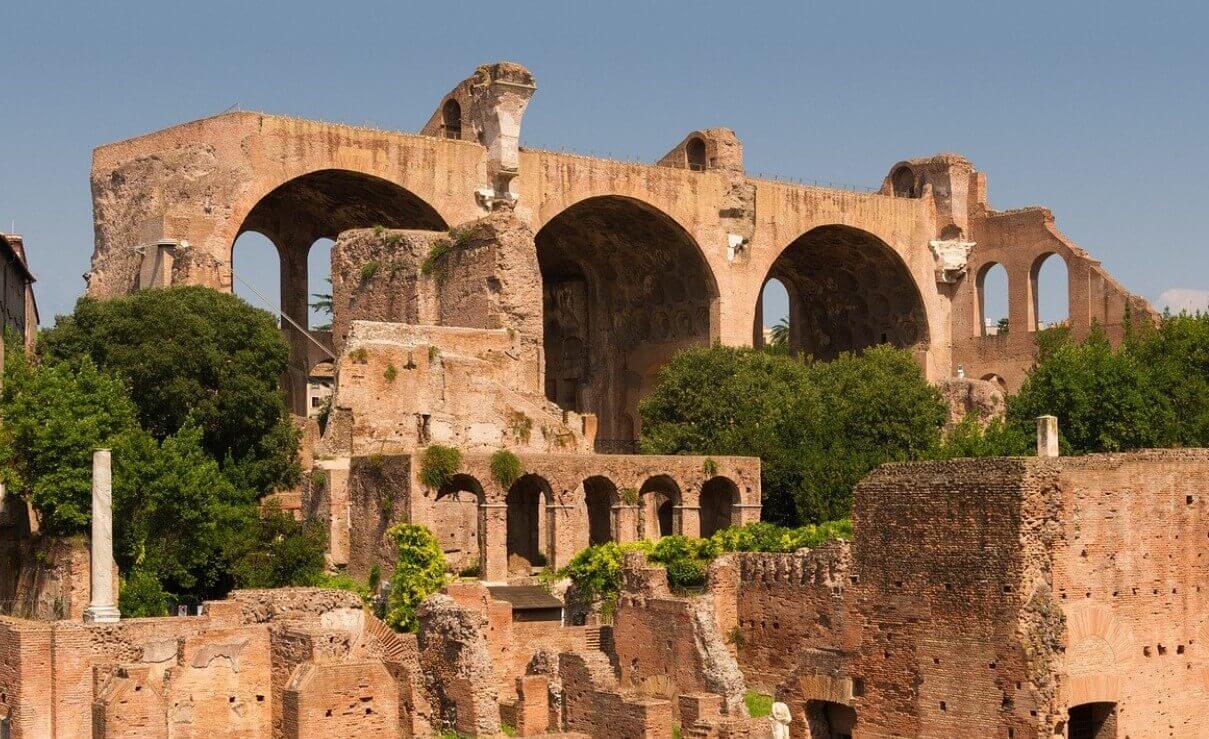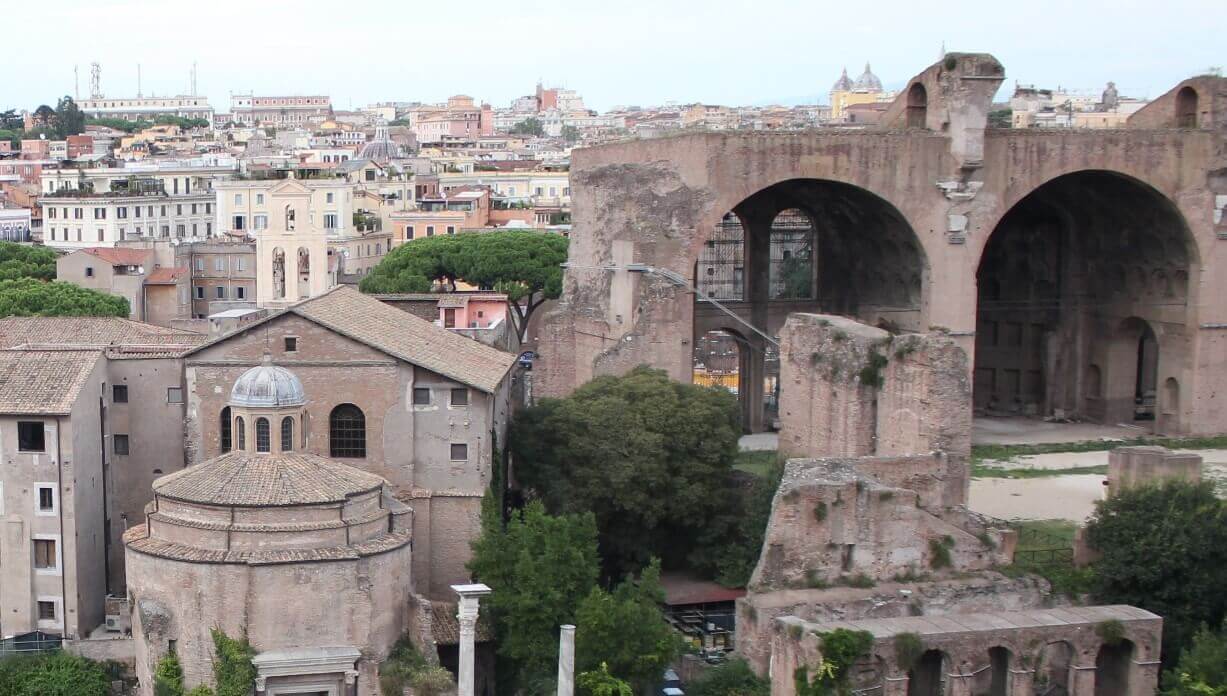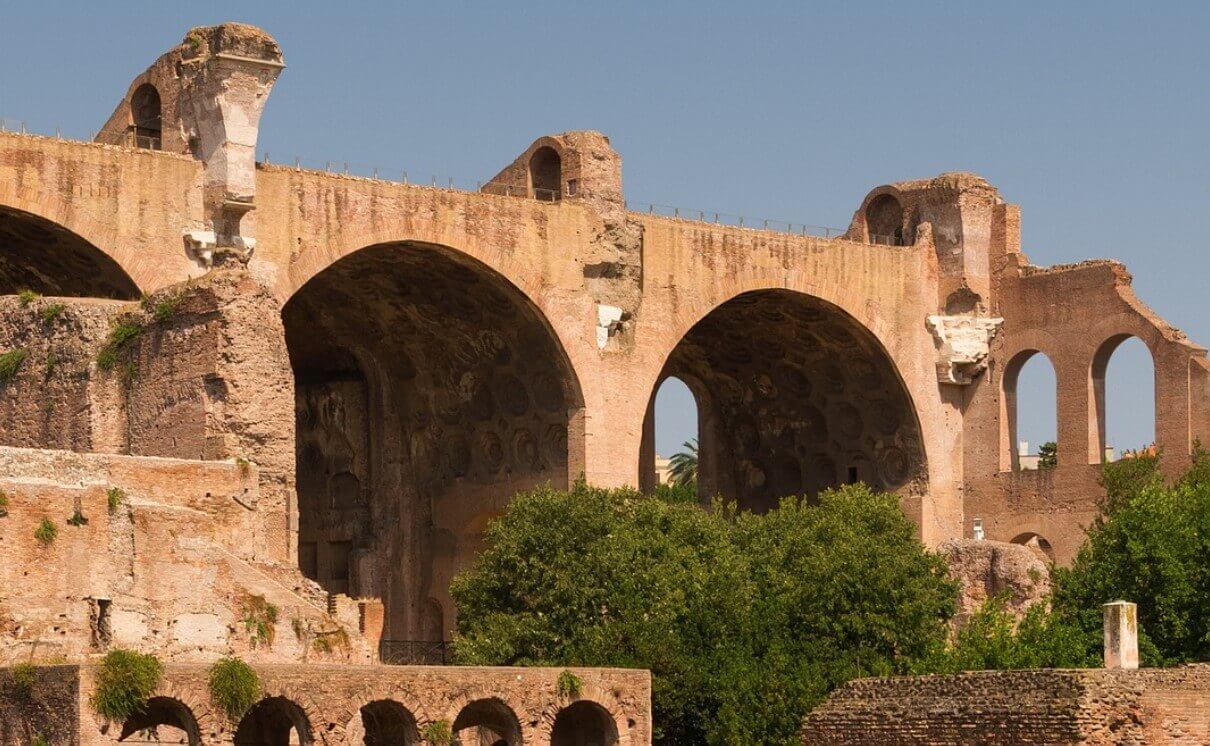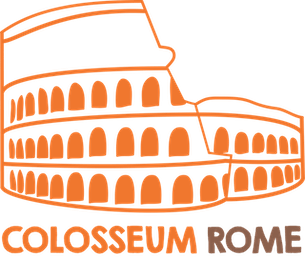
Basilica of Maxentius in Rome: Tickets, History & Reconstruction
Planning to explore the impressive ruins of the Basilica of Maxentius in Rome? This guide has everything you need to know about how to visit the Basilica of Maxentius and Constantine in Rome, including where to find it, how to get there, and whether you need tickets to access the site.
Once the largest building in the Roman Forum, the Basilica of Maxentius was a masterpiece of engineering and architecture. Learn about its construction, later modifications by Emperor Constantine, and how experts have worked to understand and reconstruct its original form. Start your visit and discover the fascinating story behind the Basilica of Maxentius in the heart of ancient Rome!
Contents
- 1 How to Visit the Basilica of Maxentius and Constantine
- 2 Basilica of Maxentius and Constantine Location & How to Get There
- 3 Basilica of Maxentius and Constantine Architecture
- 4 Basilica of Maxentius Reconstruction
- 5 Interesting facts about the Basilica of Maxentius
- 6 Who Built the Basilica of Maxentius?
- 7 What was the Maxentius Basilica used for?
- 8 The Basilica of Maxentius History
- 9 Top Attractions near Basilica of Maxentius and Constantine in Rome
- 10 Frequently Asked Questions
- 11 Conclusion
How to Visit the Basilica of Maxentius and Constantine
The Basilica of Maxentius and Constantine is included with any ticket that gives access to the Roman Forum, so you don’t need a separate pass to explore this colossal ancient hall. Whether you’re visiting on your own or joining a guided tour, the basilica is one of the highlights along the Forum’s main walking route.
Here are the best ways to visit:
- Standard Roman Forum + Colosseum ticket: Get your entry pass online (see here) so you can skip the queues and head straight into the archaeological area. Once inside, follow the path along the Via Sacra to reach the basilica’s towering arches.
- Guided Colosseum & Roman Forum tour: A guide will bring the ruins to life and explain how this monumental building was used for public gatherings, legal proceedings, and imperial ceremonies. Great choice if you want historical context while exploring (check this option).
- Rome Tourist Pass: If you’re planning to visit the Forum, Colosseum, Vatican Museums, and other top attractions during your stay, an all-in-one pass like the Roma Pass or Omnia Card can simplify your planning and save time (see latest offers here).
👉 You can browse all current tickets and tours here to pick the option that works best for your itinerary.
Basilica of Maxentius and Constantine Location & How to Get There

The Basilica of Maxentius and Constantine stands on the northern edge of the Roman Forum, right in the middle of what used to be the political and commercial heart of ancient Rome. Its massive arches dominate the landscape, and you’ll spot it easily while wandering between the Forum and the Colosseum.
You’ll find the basilica just a few minutes from the Temple of Romulus, the Via Sacra, and the Arch of Titus, which makes it super convenient to combine with your visit to the Forum and Palatine Hill. Because of its central position, most visitors pass right by it without even planning to, it’s one of those unmissable landmarks on the Forum route.
How to reach the Basilica of Maxentius and Constantine
- By metro: Take Line B (the blue line) and hop off at Colosseo station. From there, walk toward the entrance of the Roman Forum along Via dei Fori Imperiali. Once inside, follow the path up the Via Sacra, the basilica is roughly a 10-minute walk from the gate.
- By bus: Several buses stop near Via dei Fori Imperiali or Piazza Venezia, including lines 51, 75, 85, 87, and 118. From either stop, simply follow the signs leading to the Roman Forum entrance.
- On foot: If you’re already visiting the Colosseum, the Arch of Constantine, or Piazza Venezia, you can walk to the basilica in about 5 to 8 minutes. It’s one of the easiest monuments to reach in the entire archaeological area.
You can check the exact location of the Basilica of Maxentius and Constantine and find the quickest walking route on Google Maps below.
Basilica Nova of Maxentius and Constantine Opening Hours
The Basilica of Maxentius and Constantine is part of the Roman Forum archaeological area, which means you can visit it during the Forum’s regular opening hours. Access is generally available daily, although certain areas may be temporarily restricted if conservation work is taking place around the massive vaulted halls.
The Roman Forum usually opens at 8:30 am, with closing times changing by season: around 4:30 pm in winter and up to 7:15 pm in summer. The last admission is typically one hour before closing.
Closed on: December 25 and January 1.
Days | Hours |
Monday – Sunday | 8:30 am – 4:30 pm (winter) / 8:30 am – 7:15 pm (summer) |
December 25, January 1 | Closed |
Visiting tip: Plan to explore the basilica early in the morning or toward the end of the day. The soft light makes the gigantic arches even more impressive, and you’ll have fewer people in your photos as you walk through one of ancient Rome’s most monumental buildings.

Basilica of Maxentius and Constantine Architecture
The Basilica Nova Maxentius architect sure was clever. In particular, the concrete vaults were mind boggling to modern archeologists, architects and engineers.
The mixture of cross and barrel vaults leaves many scratching their heads as to how the structure stood. The remains of the basilica are still the tallest in the Roman forum.

Maxentius Basilica construction, height, windows & materials
Covering 6500 metres squared, the site is impressive. The height of the vaults reached 35 metres, with 14 ½ metre columns supporting the weight.
Internally, the basilica was equally as impressive as the exterior. The 8 corinthian columns are long gone, although you can see some evidence of their existence in the corner of one of the naves.
Reportedly covered with bronze guided wall coverings, and a delightful marble floor, the effect would have been jaw dropping! From outside, bronze covered roof decorations ensured you couldn’t miss this sight.
Basilica of Maxentius Reconstruction
To get a true sense of the size and scale of this impressive structure, there are several great reconstructions available.
Check out this one here to truly appreciate the size and exterior. But our favourite are by far the mock-ups of the interior.

Interesting facts about the Basilica of Maxentius
Here are some fascinating facts about the Basilica of Maxentius, one of ancient Rome’s most remarkable architectural achievements:
- Maxentius got a bit of a bad deal. He was given the reputation of a tyrant. That’s not entirely true however – he was known for saving the Christians from persecution for example. Constantine initiated a slander campaign against Maxentius after his death. He even renamed the basilica after himself.
- Maxentius died at the Milvian Bridge battle. Rumour has it he drowned in the river.
- To add insult to injury, Constantine built a huge statue of himself. You can see some of the remains of this – the head and a foot – in the Capitoline Museum.
- The height of the structure you can see today is impressive. But those are just remnants of the side aisles. The centre nave was much bigger!
Who Built the Basilica of Maxentius?
The Basilica Nova in Rome was commissioned by Maxentius. He was an emperor of Rome for 6 years until his death in 312 AD.
He was in a battle with Constantine over legitimacy to the throne. Constantine eventually became the victor and took the reins. He also finished off the basilica.

What was the Maxentius Basilica used for?
Now, we know that ancient Roman basilicas were meeting places more than places of worship. But, for the Basilica Nova, there aren’t really any records to prove what actually went on in there.
Other similar basilicas also had places of trade located within the structure – again there is no evidence of this.
We can assume however that it was some form of governmental meeting place.

The Basilica of Maxentius History
Basilicas in ancient Roman times are not exactly how we picture them today within the catholic church.
Whereas the catholic church basilicas are reserved for special churches as designated by the Pope, the Roman basilica was more general. A meeting place for council sessions, as well as a general gathering point was the real purpose of the roman basilica. It was only later, once the Romans adopted Christianity, that the basilica was equated to a church.
Although Maxentius began the construction of the Maxentius Basilica – or the Basilica Nova as it is also known – it was actually finished by Constantine in 312 AD.
In the 9th and 14th centuries, earthquakes damaged the structure. Now, very little remains of the structure. Some parts were carried off, others were broken down into building materials. You can see three remaining vaults on the site – which are pretty cleverly built for the time and continue to baffle historians.
Top Attractions near Basilica of Maxentius and Constantine in Rome
After exploring the impressive Basilica of Maxentius, you’ll find yourself surrounded by some of Rome’s most fascinating landmarks. Here are seven nearby attractions you should definitely include in your visit.
- Roman Forum: Step right into the heart of ancient Rome where temples, arches, and government buildings once stood. The atmosphere is full of history and it’s one of the best spots for photos, perfectly complementing your visit to the Basilica of Maxentius. Get Roman Forum tickets here >>
- Arch of Constantine: Only a short walk away, this grand arch celebrates Emperor Constantine’s victory over Maxentius. It’s one of Rome’s most famous monuments and a great place to admire ancient art and take memorable pictures.
- Temple of Romulus: This small circular temple was dedicated to Maxentius’s son and is one of the best-preserved structures in the Roman Forum. It’s a peaceful and charming reminder of the city’s imperial past.
- Palatine Hill: Climb to the top of Palatine Hill for beautiful views of the Forum and the Basilica. The ancient ruins and quiet gardens here offer a calm escape right in the heart of Rome.
- Capitoline Hill: One of Rome’s legendary seven hills, the Capitoline is home to elegant piazzas, fascinating museums, and sweeping views over the Forum. It’s the perfect spot to experience the city’s rich history and culture.
- Via Alessandrina: Take a stroll along this historic street that links the Imperial Forums with the Basilica of Maxentius. It’s a lovely, less crowded route where you can enjoy the charm of ancient Rome at your own pace.
- Circus of Maxentius: Located a bit farther along the Appian Way, this ancient chariot-racing arena built by Maxentius is worth the visit. The vast open space helps you imagine the thrill of the races that once entertained thousands.
With so many incredible sites just steps away from the Basilica of Maxentius, you’ll have endless opportunities to experience the magic of ancient Rome, from grand ruins to peaceful viewpoints.
Frequently Asked Questions

Learn the answers to these common questions, then impress your travel companions with your knowledge!
When was the Basilica of Maxentius built?
Work started during the Maxentius period in 308AD, however Constantine had it finished off after his death in 312AD. Then, he changed the name to Constantine. And built a huge statue of himself outside. I have absolutely no idea how they managed to build it in 4 years with no machinery! My local council has been resurfacing one road in my town for 10 months!
What was the purpose of the Basilica of Maxentius?
Generally, an ancient Roman Basilica would be a political meeting place. Maxentius had intended it to be an audience hall. Who knows really what it was used for during Constantine’s time. However, we can assume some sort of assembly space.
Is entry to the Basilica of Maxentius free?
You can visit the Basilica as part of your visit to the Roman Forum – it will be included in your ticket. Find out which ticket is best for your Roman Forum and Colosseum visit here.
How tall is Basilica Nova?
The original structure stood at 25 metres. Now, when you see the height of the ruins, they seem pretty impressive. However, remember that these are just side wings of the Basilica. The main structure was much taller!
Who built the Basilica Nova?
The construction of the building was commissioned by Maxentius. Once he died, Constantine finished off the (largely complete) works. So, sometimes it is known as the Basilica of Constantine and Maxentius.
Conclusion
You simply can’t miss the Basilica of Maxentius in Rome when visiting the Roman Forum. Luckily, it’s hard to overlook as you walk along the Via Sacra.
This area is teeming with ancient Roman ruins. But the Basilica Nova is surely one of the most impressive. Make sure to send us some pictures if you get there! For more information on the Colosseum and Roman Forum attractions, visit our homepage.
Fanny, an ardent admirer of ancient history and architecture, has been fascinated by the Colosseum since her first visit to Rome in 2012. As a key contributor to the Visit Colosseum Rome blog, she brings her passion for the Roman Empire’s monumental legacy to every article and guide.
